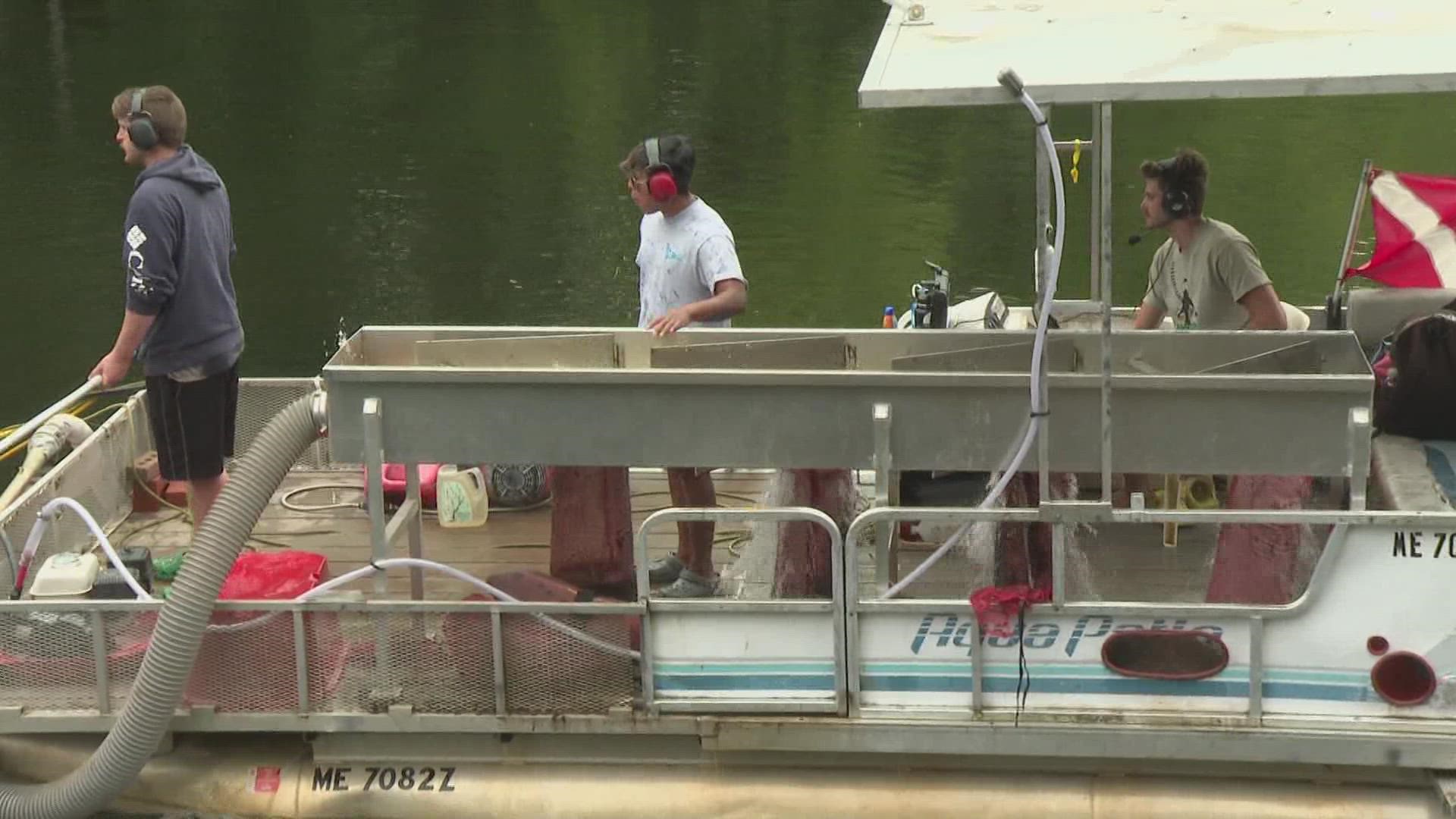NAPLES, Maine — Milfoil species are incredibly invasive plants that thrive and spread in shallow water, choking out surrounding plant life.
Variable leaf milfoil has been trying to expand in the Sebago Lake region since the 1970s. Since 2005, the Maine-based nonprofit Lakes Environmental Association has been fighting back in the Songo River — one of Maine's busiest inland waterways.
Milfoil plants like to grow in water about 15 feet deep or less, LEA Milfoil Control Crew Leader Lucien Sulloway explains. Once their long, billowy stalks break the surface, their tops bloom into flowers.
Propellers on passing boats can cut the plants into fragments, which then spread, settle elsewhere on the bottom, and grow anew.
With that challenge, there are few ways to effectively remove milfoil. LEA chose not to use chemical treatments that others have used with spotty results.
So someone’s got to go in the water.
There, NEWS CENTER Maine met Michael Flannery and Bradley Melvin as they dove with air hoses and a wide suction hose.
The pair and their fellow divers spend eight hours a day, five days a week pulling milfoil up by the root and sucking it up to the boat at the other end of the hose. It’s then bagged by other workers on deck.
Divers have reduced an infestation that used to line both banks, but the work is not finished and must be done by hand. Sulloway says they measure success by the bag.
"Here, on the Songo River, we average pulling, maybe, 10 bags a day," Sulloway shrugged as a crew worked in the river behind him. "But, for example, on Sebago Cove, where there’s monoculture milfoil everywhere, they may pull 120 bags."
Colin Holme is LEA's executive director. He and Sulloway brought NEWS CENTER Maine down river from the divers and showed us where crews put down benthic barriers, which are, essentially, large white tarps that are secured by rebar and act as a blanket, covering milfoil infestations until they die.
Holme says some of the organization's funding is set to run out in the near future and he'd love for more camp owners to pitch in.
They also like getting phone calls from people like Mark Rand, who owns a camp on nearby Brandy pond. He calls from time to time when he notices milfoil blooms on the pond, helping LEA divers pinpoint infestations they would have likely spent time searching for.
"Oh my goodness, it’s just about the life of the lake," Rand said when asked about the seriousness of the plan. "Because, the invasive milfoil can just suffocate a lake."

